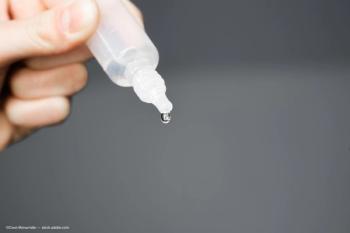
Study: Statins associated with lower risk of development of POAG
Use of statins to control elevated cholesterol levels and prevent cardiovascular events also has another upside, i.e., a concomitant lower risk of development of primary open-angle glaucoma (POAG).
In vitro studies conducted in the 2000s indicated that statins may have the ability to decrease IOP and provide protection for the retinal ganglion cells against damage from glaucoma, according to the authors of a newly published study by Kang et al. in
The association between statin use and POAG has been investigated previously, but the results were inconclusive and contradictory and only relatively short courses of statin use were investigated.
In the study under discussion, the investigators explained, “Our primary a priori hypothesis was that longer duration of statin use is associated with a lower risk of POAG, and our secondary hypothesis was that higher cholesterol levels are associated with a higher risk of POAG.”
This population-based cohort study included 136,782 patients (113,702 women, 23,080 men) who were 40 years of age and older who did not have glaucoma. The patients were drawn from the Nurses’ Health Study (NHS) (patients followed from 2000 to 2014, Nurses’ Health Study 2 (NHS2) (patients followed from 1999-2015), and the Health Professionals Follow-up Study (HPFS) (patients followed from 2000 to 2014).
A review of the medical records confirmed the incident cases of POAG. The study data regarding development of glaucoma, assessment of high cholesterol, total serum cholesterol, statin use, and use of other cholesterol-lowering drugs had been collected biennially from the patients.
The main outcomes measures were the multivariable adjusted relative risks (RR) and the 95% confidence intervals (CIs).
Study findings
A total of 886 confirmed cases of incident POAG were identified (522 women in the NHS, 208 men in the HPFS, and 156 women in the NHS2; mean patient age, 68.5 years) during 1,485,498 person-years of follow-up, the authors reported.
“Individuals who used statins for 5 or more years were more likely to have reported a history of elevated cholesterol levels, higher total serum cholesterol levels, and a higher prevalence of cardiovascular disease and risk factors. Longer statin use was not associated with known risk factors for glaucoma such as African American race/ethnicity or having a family history of glaucoma,” the investigators said.
Importantly, they found that every 20 mg/dL increase in the total serum cholesterol value was associated with a 7% increase in the risk of development of POAG (RR, 1.07; CI, 1.02-1.11). This finding reached significance (p = 0.004).
They also reported that any self-reported history of elevated cholesterol levels was associated with a higher risk of development of POAG (RR, 1.17; CI, 1.00-1.37), and that a history of any use of statins was associated with a lower risk of development of POAG (RR, 0.85 CI; 0.73-0.99),
An important finding involved the longer use of statin, i.e., patients who used statins for 5 or more years had a 21% lower risk of development of POAG compared with patients who had never used statins (RR, 0.79; CI, 0.65-0.97).
Age was a factor in this analysis. The authors reported, “The inverse association between use of statins for 5 years or longer and risk of POAG was stronger among those who were 65 years or older (RR, 0.70; CI, 0.56-0.87) than among those younger than 65 years (RR, 1.05, CI, 0.68-1.63).
Effects of statins
This class of drugs may lower the risk of development of POAG by IOP-lowering and neuroprotective mechanisms.
“Statins affect the activities of myosin II adenosine triphosphatase and p kinase in the trabecular network that increase nitric oxide production and aqueous outflow facility, which may lead to some IOP lowering. Also, greater production of nitric oxide would increase the blood flow to the optic nerve,” the investigators explained.
Additional neuroprotective effects that protect the retinal ganglion cells include anti-excitotoxic, anti-apoptotic, and anti-inflammatory effects.
Based on their results, the authors concluded, “Among adults aged 40 years and older, higher serum cholesterol levels were associated with higher risk of POAG, while 5 or more years of statin use compared with never use of statins was associated with a lower risk of POAG.”
Newsletter
Don’t miss out—get Ophthalmology Times updates on the latest clinical advancements and expert interviews, straight to your inbox.















































